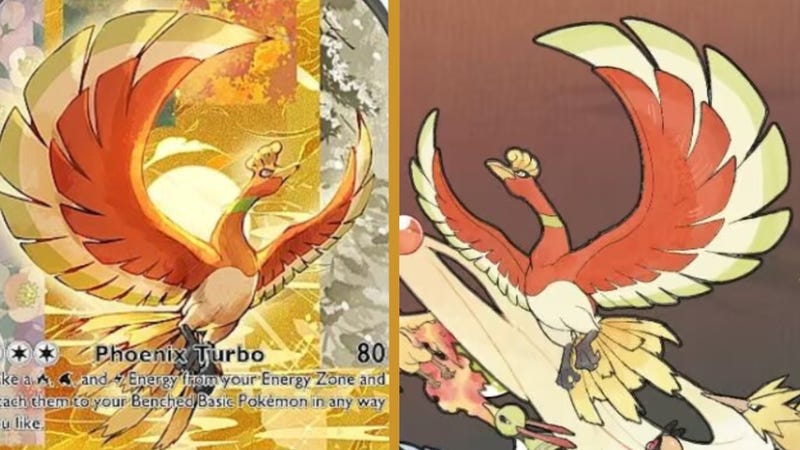
Understanding the Plagiarism Allegations in Pokémon TCG Pocket
When accusations of plagiarism arise, they often lead to a complex web of claims, denials, and confusion. This is especially true when it involves well-known franchises like Pokémon. Recently, a Chinese illustrator claimed that his artwork was used without permission in the new set of Pokémon TCG Pocket titled "Wisdom of Sea and Sky." In response, the official X account of Pokémon released a statement confirming that the affected cards have been removed entirely.
The statement from Pokémon reads: “We want to share an important update regarding the upcoming expansion, Wisdom of Sea and Sky. It has come to our attention that there was a production issue regarding the illustration of Ho-Oh featured in the immersive card artwork for Ho-Oh EX (3-Star) and Lugia EX (3-Star).” While the term “production issue” may sound vague, the statement goes on to provide more clarity.
After an internal review, Pokémon discovered that the card production team had provided incorrect reference materials to the illustrator who created these cards. As a result, both cards were replaced with temporary placeholders while the team works on replacing them with new artwork as soon as possible. This explanation shifts the responsibility away from the artist, which seems surprising given the established reputation of Sie Nanahara, the illustrator involved.
The Significance of Immersive Cards
Immersive cards are a key feature of the Pokémon TCG Pocket app, offering animated collectibles that play out beautiful sequences when clicked on. These cards are one of the main selling points of the game, and their absence from the new set is a significant concern for players. As a dedicated player, I’ve collected all previous immersive cards, and I can attest to their importance. The fact that these specific cards are missing means that the new set lacks a crucial element that many players have come to expect.
Replacing these cards is no simple task. Pokémon TCG Pocket uses a mix of freshly commissioned art and classic cards, but the Ho-Oh and Lugia cards are animated, requiring large-scale artworks or complex 3D animations. These cannot be quickly produced, making the replacement process significantly more challenging.
The Placeholder and Its Impact
Unfortunately, the temporary placeholder for the affected cards is simply some “coming soon” text. When activated, it shows a black rectangle, which does little to satisfy players who were expecting a high-quality animation. So far, there have been no direct accusations regarding the Lugia immersive card, though it’s likely that it was removed at the same time as a precaution. Although no blame is being placed on the artist, concerns remain about the possibility of similar issues arising for both cards, given that they came from the same creator.
The Illustrator’s Response
The Chinese artist whose work was allegedly copied has also made a statement, albeit in a rather ambiguous manner. He refers to a past commission but doesn’t specify who commissioned the work. “I solely delivered commissioned 2D artwork,” he says, “with no involvement in subsequent model production, sales, or profit sharing. This revealed past gaps in copyright awareness.” He added “profound gratitude” that the artwork had been removed.
Meanwhile, Sie Nanahara, the illustrator responsible for the immersive cards, has yet to make any public statements or respond to requests for comment.
Conclusion
The situation surrounding the alleged plagiarism in the new Pokémon TCG Pocket set highlights the complexities of intellectual property in the digital age. While the official response from Pokémon provides some clarity, it also raises questions about the processes and responsibilities involved in creating such content. For now, players will have to wait for updates on the replacement of the affected cards, hoping that the final product will meet the high expectations set by the franchise.


